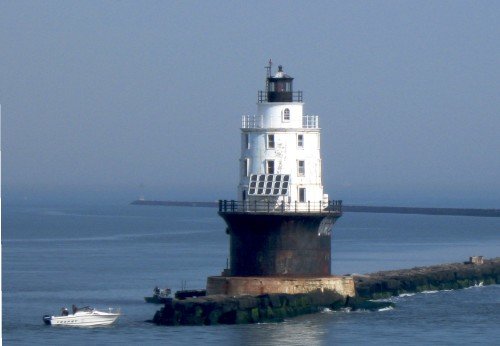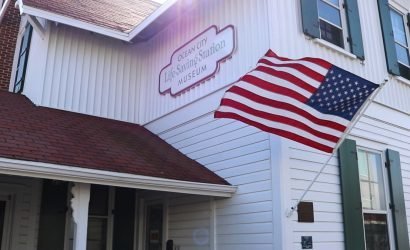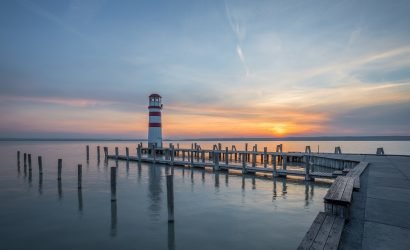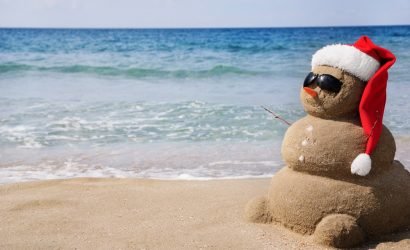Delaware’s Seashore Lighthouse Weekend was held earlier this month, where visitors could get a reduced rate to tour some of the state’s well-known coastal lighthouses. If you missed the proverbial boat on this awesome Day Trippin’ opportunity, we did some of our own research to help en-“lighten” you about our area’s historic sites.
Fenwick Island Lighthouse lies on the barrier island bearing the same name, at the southernmost point of Delaware. In the mid-19th century, many shipwrecks occurred on the sandbars of the Fenwick shoals causing the federal government to pay attention. In 1856, Congress authorized the building of a lighthouse to put an end to these catastrophes.
The land that was required for the building was bought from Mary Hall for $50. It is considered to be the highest point on the island and is located within feet of the Maryland-Delaware border. Three years later in 1859, the lighthouse first began working, helping to illuminate the surrounding dangerous waters.
The lighthouse stands 87 feet high with a white light that was reactivated in 1982. Originally, the light was produced by burning whale oil, until 1940 when the lighthouse began using an automated light. During this time, the lighthouse no longer required a keeper to operate its light. The last keeper, Charles Gray, immediately bought several acres of land in close proximity of the lighthouse and his family continues to reside there today.
If you have ever been on the Cape May- Lewes Ferry, then you have passed the Delaware Breakwater East End Light. This small 56 foot lighthouse is situated on strategically placed breakwater rocks in the 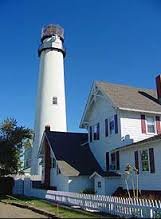 Delaware Bay. It was first commissioned in 1884 to help provide a safe entrance to the harbor for ships. In its first few years of use, the East End Light experienced the Great Blizzard of 1888 which accumulated 20-60 inches of snow in some areas and had wind gusts up to 45 miles per hour.
Delaware Bay. It was first commissioned in 1884 to help provide a safe entrance to the harbor for ships. In its first few years of use, the East End Light experienced the Great Blizzard of 1888 which accumulated 20-60 inches of snow in some areas and had wind gusts up to 45 miles per hour.
Besides heavy snows, fog was another major obstacle that this little lighthouse helped to combat. On an average year, the fog horn in the East End Light would have sounded roughly 400-500 hours. Although the fog horn rang more than an average, this was nothing compared to the 645 hours that it tolled in 1905. All of that noise must have been a real headache for the occupying lighthouse keeper of that at year.
Due to the strategic positioning of the East End Light, the lighthouse did contribute to the demise of the West End Light, which was located on the opposite side of the same breakwater rock structure. In 1903 the western beacon was extinguished, leaving the East End Light as the sole light in this area. The East End Light eventually became automated in 1950, when it was connected by cable from the shore.
The lighthouse was continually used until 1996 when the Coast Guard declared the building to be an unnecessary property and motioned to have it disposed. The State of Delaware however fought to keep the building and eventually won ownership of the lighthouse. In 2004, the East End Light was finally renovated, allowing the first public tours of the building the following Spring. Tours still continue today, giving participants a unique look at what life was like on the edge of the jetty.
A few years after the construction of the East End Light, a second beacon, named Harbor of Refuge, was built in close proximity. This lighthouse was created to provide a deep anchoring point for larger ships such as military vessels that could not dock in the shallower waters surrounding the East End Light. The lighthouse and breakwater created with the building reach far off shore, providing a safe haven for ships voyaging between the Chesapeake Bay and New York. Due to this harbor’s location, many ships will travel along the East Coast even with the threat of bad weather, because they can safely dock in this harbor if conditions become worse.
During the construction of The Harbor of Refuge, a powerful storm with winds up to 85 miles per hour swept through the area and destroyed the temporary light-post and fog bell on the newly constructed breakwater. In the midst of the storm, two vessels crashed into the rock formation, killing four sailors and Captain Joseph Mehaffey. The tragedy conveyed the eminent need for a beacon in this location.
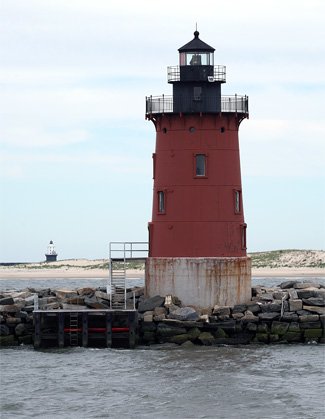 When the lighthouse and breakwater were finally completed, the building stood 15 feet and 6 inches high. The building is a hexagonal shape, differing from more common cylindrical and conical shaped lighthouses. During its first few dangerous storms, the Harbor of Refuge Light was moved four inches on its foundation. This caused the dismantling of the original structure to be replaced with a cast iron tower and circular viewing deck.
When the lighthouse and breakwater were finally completed, the building stood 15 feet and 6 inches high. The building is a hexagonal shape, differing from more common cylindrical and conical shaped lighthouses. During its first few dangerous storms, the Harbor of Refuge Light was moved four inches on its foundation. This caused the dismantling of the original structure to be replaced with a cast iron tower and circular viewing deck.
Coast Guardsmen occupied the Harbor of Refuge until 1973 when the lighthouse became automated. After this, the lighthouse slowly fell into a neglected state and its exterior was only maintained through minor upkeep. In 2002, the Harbor of Refuge became property of the non-profit Delaware River and Bay Lighthouse Foundation. The building was opened to public tours the following year. More recently however, the lighthouse has been threatened due to the troubled breakwater that it rests on. Work authorized by Congress began on the rock formation in 2011 to save the lighthouse.
Sadly, there are a few lighthouses that have disappeared from our shores. One of these is the famous Cape Henlopen Lighthouse built in 1767 as the sixth lighthouse constructed in the American Colonies. The lighthouse almost met an early end during the American Revolution when British soldiers almost destroyed the building. This beacon once stood 69 feet and three inches high on the North side of the Great Dune, where it towered an extra 49 feet above sea level. This beacon of light helped to guide ships from the Atlantic into the Delaware Bay until it fell victim to erosion. Due to the movement of the dune that it had been built on, the lighthouse eventually crumbled in 1924. Today a replica of the Cape Henlopen Lighthouse can be seen in the round-about entering Rehoboth Beach.
Exploring and touring our local lighthouses makes for an informative Day Trippin’ activity. From the history to the architecture, taking a tour of our coastline is ideal for any time of year. Make sure to stop by our coasts’ historic beacons of light on your next day off, and keep a look out for a spookier article on local lighthouses coming soon.
Until next time…






